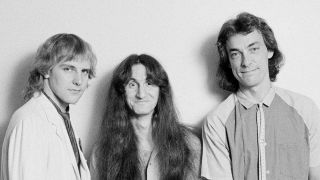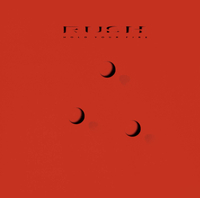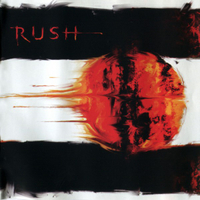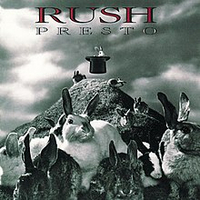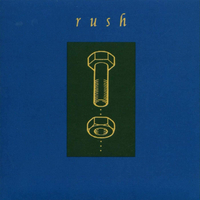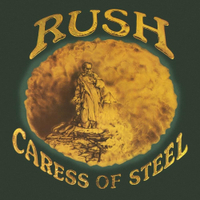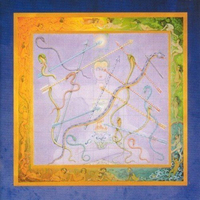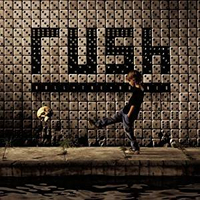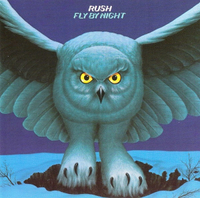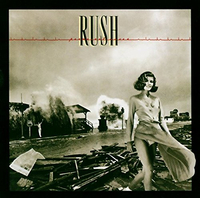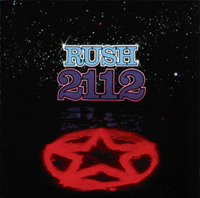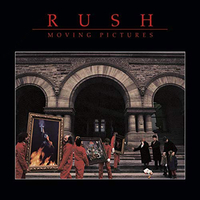When Rush emerged with their self-titled debut album in 1974, many looked upon them as nothing more than Led Zeppelin clones. Indeed, when music director and DJ Donna Halper and her team dropped the needle on Working Man on Cleveland radio station WMMS, the station’s switchboard was inundated with calls asking if this was a new track by Plant, Page, Jones and Bonham.
Now, more than 40 years later and after 19 studio albums, 11 live records and an acclaimed career which saw the band inducted into the Rock And Roll Hall Of Fame in 2013, it’s harder to judge which is more unlikely: (a) that they lasted so long or (b) that they did so on the strength of hiring drummer/lyricist Neil Peart to replace John Rutsey.
Rush’s near-five decade run is a riddle wrapped in a mystery, inside the enigma that was the famously fan/limelight-avoiding and sadly departed Peart. Yet Rush were a three-piece band of equal parts, and similar attention is long overdue for vocalist and bassist Geddy Lee and guitarist Alex Lifeson.
Lee and Lifeson’s qualities added to Peart’s prodigious talents for rhythms usually found outside the rock sphere inspired a collective ambition to improve and expand their abilities, and to make music that is always evolving, never safe.
For those of us who grew up with Rush, their later albums are friends we’ve chosen, but the older ones are like family members. Some are harder to love, but we remain loyal to all. With that in mind, here is every Rush studio album ranked from 'worst' to best.

<a href="https://target.georiot.com/Proxy.ashx?tsid=38569&GR_URL=https%3A%2F%2Famazon.co.uk%2FHOLD-YOUR-FIRE-VINYL-VERTIGO%2Fdp%2FB0057PSGLI%3Ftag%3Dhawk-future-21%26ascsubtag%3Dhawk-custom-tracking-21" data-link-merchant="Amazon UK"" target="_blank" rel="nofollow">19. Hold Your Fire (Mercury, 1987)
History hasn’t been kind to Hold Your Fire album. Its slick production muscled out the quirkiness that edged Signals and Grace Under Pressure, while Neil Peart’s faux-oriental Tai Shan is loathed to this day by Geddy Lee and Alex Lifeson..
Yet it deserves re-evaluation. For one, it contains Time Stand Still, arguably the greatest Rush song of the 80s. Add in propulsive opener Force Ten and the stark Mission, and its tarnished reputation begins to regain some lustre. It’s still a long way from great – too many bland, forgettable songs – but neither is it as bad as the haters claim it to be
<a href="https://target.georiot.com/Proxy.ashx?tsid=38569&GR_URL=https%3A%2F%2Famazon.co.uk%2FVapor-Trails-Remixed-VINYL-Rush%2Fdp%2FB00E9P959E%3Ftag%3Dhawk-future-21%26ascsubtag%3Dhawk-custom-tracking-21" data-link-merchant="Amazon UK"" target="_blank" rel="nofollow">18. Vapor Trails (Atlantic, 2002<a href="https://target.georiot.com/Proxy.ashx?tsid=38569&GR_URL=https%3A%2F%2Famazon.com%2Fdp%2FB000065DTE%2F%3Ftag%3Dhawk-future-20%26ascsubtag%3Dhawk-custom-tracking-20" data-link-merchant="Amazon US"" data-link-merchant="Amazon UK"" target="_blank" rel="nofollow">)
Vapor Trails was the most important album Rush had made since 2112, mainly because they never expected to make it in the first place. It marked Neil Peart’s return from a wilderness of grief after the death of his wife and daughter – and it’s no coincidence that the album opens with the sound of his drums.
But while it was an emotional triumph, musically it was less so. One Little Victory and Ghost Rider are as good as anything they’d recorded during the previous 15 year, but many of the songs – constructed out of jams – are unmemorable, while a flat mix (something that was addressed in the 2013 remix) takes off any remaining shine. Still, it was great to have them back.
<a href="https://target.georiot.com/Proxy.ashx?tsid=38569&GR_URL=https%3A%2F%2Famazon.com%2Fdp%2FB0002NRQUW%2F%3Ftag%3Dhawk-future-20%26ascsubtag%3Dhawk-custom-tracking-20" data-link-merchant="Amazon US"" target="_blank" rel="nofollow">17. Test For Echo (Atlantic, 1996)
A minor disappointment after Counterparts, Rush’s 16th studio album was sturdy rather than sparkling. “It doesn’t really have a defined direction,” admitted Geddy Lee in 2002. “I kind of felt like we were a bit burnt creatively.”
Still, even a workmanlike Rush record has its moments. It’s certainly proggier than its predecessor, with Limbo and the elasticated Resist twisting and turning like the band used to back in the good old days. The problem is that few of the songs stick their heads above the parapet melodically or hook-wise. Test For Echo doesn’t take long to fade from the memory when it’s over.
<a href="https://target.georiot.com/Proxy.ashx?tsid=38569&GR_URL=https%3A%2F%2Famazon.com%2Fdp%2FB0002NRQTS%2F%3Ftag%3Dhawk-future-20%26ascsubtag%3Dhawk-custom-tracking-20" data-link-merchant="Amazon US"" target="_blank" rel="nofollow">16. Presto (Atlantic, 1989)
Presto is held up as the point where Rush moved on from their “keyboard phase”, even if still sounds like an utterly 1980s proposition. Produced by Rupert Hine, it boasts echoing drum sonics and a glistening sheen, while the rhythms of Scars could almost be ABC or Frankie Goes To Hollywood.
Still, it’s strong on actual songs, with Chain Lightning and The Pass sounding like accidental power-pop, and War Paint, with its rousing, anthemic refrain of ‘Boys and girls together/Paint the mirror black’ coming on like a futuristic Sweet. A better Rush album than most Rush fans realise.
<a href="https://target.georiot.com/Proxy.ashx?tsid=38569&GR_URL=https%3A%2F%2Famazon.com%2Fdp%2FB0002NRQTI%2F%3Ftag%3Dhawk-future-20%26ascsubtag%3Dhawk-custom-tracking-20" data-link-merchant="Amazon US"" target="_blank" rel="nofollow">15. Counterparts (Atlantic, 1993)
Presto and Roll The Bones had been touted as back-to-basics album, but Counterparts was the point where Rush truly reconnected with the rock band they once were.
Geddy Lee acknowledged Rush were fans of groups such as Soundgarden and Pearl Jam, and while Counterparts hardly went ‘full grunge’, Animate and Stick It Out were more stripped down than anything they’d recorded in years. Of course, ‘stripped down’ is all relative – Counterparts was still a complex, cerebral listen by anyone’s standards. But it successfully repositioned Rush for the coming decade.
<a href="https://target.georiot.com/Proxy.ashx?tsid=38569&GR_URL=https%3A%2F%2Famazon.com%2Fdp%2FB000001ESD%2F%3Ftag%3Dhawk-future-20%26ascsubtag%3Dhawk-custom-tracking-20" data-link-merchant="Amazon US"" target="_blank" rel="nofollow">14. Caress Of Steel (Mercury, 1975)
The difficult third album. Caress Of Steel was the first truly ‘prog’ Rush album, as showcased on the 12-minute The Necromancer and the side-long The Fountain Of Lamneth. But it wasn’t all tricky time changes and Tolkein-esque storylines – Bastille Day packed a hard rock punch and reflective Lakeside Park wallowed in delicate nostalgia (the less said about I Think I’m Going Bald, the better).
Caress Of Steel was far from perfect - it had an oddly downbeat, murky atmosphere, and it stiffed upon release, casting it as the runt in the pack of their 70s albums. But for all its flaws, it remains an essential if enigmatic Rush album.
<a href="https://www.amazon.co.uk/dp/B000OCZ8C4?tag=georiot-trd-21&ascsubtag=hawk-custom-tracking-21&geniuslink=true" data-link-merchant="amazon.co.uk"" target="_blank" rel="nofollow">13. Snakes And Arrows (Atlantic, 2007)
Meet the new Rush, as good as the old Rush. The band cited co-producer Nick Raskulinecz for making the recording process more enjoyable than any in memory – and it shows. The synths disappeared (just a Mellotron, used sparsely), and Far Cry, Working Them Angels and Spindrift rock like you’ve wished Rush would for years. It’s brilliantly paced and sequenced, mixing irresistible choruses (The Larger Bowl, The Way The Wind Blows) with instrumental brilliance (The Main Monkey Business) and arena-filling guitar, and when the riff to Armor And Sword kicks in we’re back in Moving Pictures land – it’s that good!
<a href="https://target.georiot.com/Proxy.ashx?tsid=38569&GR_URL=https%3A%2F%2Famazon.co.uk%2Fdp%2FB0002NRQU2%2F%3Ftag%3Dhawk-future-21%26ascsubtag%3Dhawk-custom-tracking-21" data-link-merchant="Amazon UK"" target="_blank" rel="nofollow">12. Roll The Bones (Atlantic, 1991)
Rush had new label for 1989’s Presto, and they also switched to Howard Jones and Tina Turner producer Rupert Hine. That unlikely combination worked best on this second collaboration, as if to prove the theory that Rush are at their best in the studio when the album title ends in an ‘S’.
Like an old friend walking out of fog, Roll The Bones emerges crisper and sharper. Synthesisers slip into the background, band and lyrics step forward; great choruses empower Dreamline, Bravado and Ghost Of A Chance, while The Big Wheel is so stripped bare that it has an almost 60s feel. Geddy Lee even gets away with rap sections in the title track and You Bet Your Life. The album has a neat cover, too.
<a href="https://target.georiot.com/Proxy.ashx?tsid=38569&GR_URL=https%3A%2F%2Famazon.co.uk%2FPOWER-WINDOWS-Rush%2Fdp%2FB0044PKG2E%3Ftag%3Dhawk-future-21%26ascsubtag%3Dhawk-custom-tracking-21" data-link-merchant="Amazon UK"" target="_blank" rel="nofollow">11. Power Windows (Vertigo, 1985)
Older fans may dismiss Rush’s 80s albums because they lack the drama of their 70s predecessors, but the playing is unquestionably tighter and the arrangements more concise. Grace Under Pressure (1984) was very good, but undermined because Lifeson also played synthesisers; Power Windows is purer because he sticks to what he does best.
Every song is a group effort, of course, but it’s impossible not to name him as the star of The Big Money. Likewise, Manhattan Project seems like Peart’s showcase and Marathon Lee’s. Then they all come together on Middletown Dreams and the fabulously sparse and hypnotic Mystic Rhythms.
<a href="https://target.georiot.com/Proxy.ashx?tsid=38569&GR_URL=https%3A%2F%2Famazon.co.uk%2Fdp%2FB000001ES9%2F%3Ftag%3Dhawk-future-21%26ascsubtag%3Dhawk-custom-tracking-21" data-link-merchant="Amazon UK"" target="_blank" rel="nofollow">10. Rush (Moon, 1974)
“This was us trying to find a sound,” said Geddy Lee of Rush’s self-titled debut. “Thinking we wanted to be a hard rock band and emulating those bands we thought were cool.”
He isn’t wrong. The sole album to feature drummer John Rutsey owed a huge debt to Led Zeppelin and other early 70s blues rockers. But Rush has a charm and energy that they never replicated, not least on the classic Working Man, which resonated with blue collar workers everywhere – as well as radio DJs who realised it was long enough for them to take a toilet break, turning it into an unexpected breakthrough hit.
<a href="https://target.georiot.com/Proxy.ashx?tsid=38569&GR_URL=https%3A%2F%2Famazon.co.uk%2Fdp%2FB007I2BZIE%2F%3Ftag%3Dhawk-future-21%26ascsubtag%3Dhawk-custom-tracking-21" data-link-merchant="Amazon UK"" target="_blank" rel="nofollow">9. Clockwork Angels (Roadrunner Records, 2012)
When Clockwork Angels was released in 2012, few suspected it would turn out to be the band's final album. But what an album to close out a quite remarkable career. The concept album was laced with some stone-cold classics, including the one-two punch of Caravan and BU2B, while the soaring title track ebbs and flows through its 7 minutes and 30 second run time.
However, it's album closer The Garden which resonates most. Spine-tingling strings and a subtle bass line from Lee open the track, before Lifeson sweeps in with an acoustic flourish. The lyrics deal with our inevitable onward journey towards death – lyrics that are even more poignant since Peart's untimely passing in January this year. Special mention also goes to Lifeson's magnificent solo on the track which raises the goosebumps every single time.
<a href="https://target.georiot.com/Proxy.ashx?tsid=38569&GR_URL=https%3A%2F%2Famazon.co.uk%2Fdp%2FB000001ESV%2F%3Ftag%3Dhawk-future-21%26ascsubtag%3Dhawk-custom-tracking-21" data-link-merchant="Amazon UK"" target="_blank" rel="nofollow">8. Grace Under Pressure (Mercury, 1984)
Signals split the fan vote, with many hating its brave new world of synthesised sounds and dialled-down guitars. Admirably, Rush refused to retreat to safe ground with the follow up, recruiting pop producer Peter Henderson to take the place of Terry Brown.
While the result wasn’t on a par with Signals, the likes of Distant Early Warning, Red Sector A and the heart-wrenching Afterimage stand among the finest songs the band recorded in any of their various sonic incarnations, while its chilling themes of Cold War angst and dystopian alienation perfectly embody those paranoid times.
<a href="https://target.georiot.com/Proxy.ashx?tsid=38569&GR_URL=https%3A%2F%2Famazon.co.uk%2Fdp%2FB000001ESB%2F%3Ftag%3Dhawk-future-21%26ascsubtag%3Dhawk-custom-tracking-21" data-link-merchant="Amazon UK"" target="_blank" rel="nofollow">7. Fly By Night (Mercury, 1975)
Exit John Rutsey and blues rock knock-offs, enter Neil Peart and a fresh and defiantly forward-looking sound. While Best I Can and the breezy Making Memories still bore the imprint of Led Zeppelin et al, it was mixed up with a new progressive rock mentality – something evident on eight-minute fan favourite By-Tor And The Snow Dog, a song that drew up the template for the epic blow-outs that followed.
At heart Rush were still a rock’n’roll band, albeit one
with brains as well as brawn. But with Fly By Night, they
were beginning to transform into something else.
<a href="https://target.georiot.com/Proxy.ashx?tsid=38569&GR_URL=https%3A%2F%2Famazon.co.uk%2Fdp%2FB000001EST%2F%3Ftag%3Dhawk-future-21%26ascsubtag%3Dhawk-custom-tracking-21" data-link-merchant="Amazon UK"" target="_blank" rel="nofollow">6. Signals (Mercury, 1982)
Following the live Exit… Stage Left, Dirk, Lerxst and Pratt (aka Lee, Lifeson and Peart) simply picked up from Moving Pictures and added more keyboards. Lots more. Subdivisions and The Analog Kid are awash with them, but never drowned.
More radical changes to the Rush soundscape, though, are in evidence on Chemistry and Digital Man, both of which further explore Police-style techno-reggae (this a full year ahead of The Police’s Synchronicity), and The Weapon, built on a dance music drum pattern. Then after a brilliant guest solo by electric violinist Ben Mink on Losing It, Rush reach for the stars with Countdown, based on watching a shuttle launch as VIP guests of NASA.
<a href="https://target.georiot.com/Proxy.ashx?tsid=38569&GR_URL=https%3A%2F%2Famazon.co.uk%2Fdp%2FB07HPY6792%2F%3Ftag%3Dhawk-future-21%26ascsubtag%3Dhawk-custom-tracking-21" data-link-merchant="Amazon UK"" target="_blank" rel="nofollow">5. Hemispheres (Mercury, 1978)
On Hemispheres Peart, painted into a corner by his promise to continue the storyline of Cygnus X-1, devised the 18-minute title track based on classical philosophy and the intellectual battle between the heart and mind, romance and intellect, reason and emotion. Proper bonkers, but <a href="https://www.loudersound.com/features/steven-wilson-why-i-love-rushs-hemispheres" data-link-merchant="loudersound.com"" data-link-merchant="Amazon UK"">we loved it.
For Rush, though, it was a tipping point. No more side-long numbers! For light relief they added a pair of indicators to a simpler future – Circumstances and the acoustic guitar-laced The Trees (controversially assumed by some to be a comment on the Canadian separatist movement) plus the stunning techno-rock instrumental La Villa Strangiato.
<a href="https://target.georiot.com/Proxy.ashx?tsid=38569&GR_URL=https%3A%2F%2Famazon.co.uk%2FPermanent-Waves-40th-Anniversary-VINYL%2Fdp%2FB083XX6F5S%3Ftag%3Dhawk-future-21%26ascsubtag%3Dhawk-custom-tracking-21" data-link-merchant="Amazon UK"" target="_blank" rel="nofollow">4. Permanent Waves (Mercury, 1980)
The kid brother to Moving Pictures, and where Lee first properly explored vocal ranges that didn’t scare dogs. Due to its unexpected hit single The Spirit Of Radio, this is perhaps the one Rush album bought by non-fans – many of them doubtless attracted by the Police-like reggae break in that track. For the rest of us, Free Will and the brooding Jacob’s Ladder reminded us of the old Rush of Ayn Rand and sci-fi. Then a pair of beautiful love songs – Entre Nous and Different Strings – hinted at a more romantic future. But rather than getting soppy, the album closes with a three-parter, Natural Science, that is both big and clever.
<a href="https://target.georiot.com/Proxy.ashx?tsid=38569&GR_URL=https%3A%2F%2Famazon.co.uk%2Fdp%2FB076JG2FNN%2F%3Ftag%3Dhawk-future-21%26ascsubtag%3Dhawk-custom-tracking-21" data-link-merchant="Amazon UK"" target="_blank" rel="nofollow">3. A Farewell To Kings (Mercury, 1977)
Ground zero for the band that Rush became. Power-trio stylings were eclipsed as Peart added a plethora of bells and percussion to his drum kit, Lee and Lifeson used pedal synths and the singer also took charge of a Minimoog.
<a href="https://www.loudersound.com/features/producer-terry-brown-on-how-rush-made-a-farewell-to-kings" data-link-merchant="loudersound.com"" data-link-merchant="Amazon UK"">Recorded in Wales, it marked the beginning of the bond between Britain and the Canadian trio. Much of it had an almost medieval feel, with tales of ancient tyrants (the title track) and everyman wanderers (Closer To The Heart, Cinderella Man and Madrigal), but it was dominated by lengthier takes on Coleridge’s Kubla Khan poem (Xanadu) and a space flight into a black hole (Cygnus X-1).
<a href="https://target.georiot.com/Proxy.ashx?tsid=38569&GR_URL=https%3A%2F%2Famazon.co.uk%2Fdp%2FB000001ESF%2F%3Ftag%3Dhawk-future-21%26ascsubtag%3Dhawk-custom-tracking-21" data-link-merchant="Amazon UK"" target="_blank" rel="nofollow">2. 2112 (Mercury, 1976)
Rush did epics before 2112 (successfully with the nine-minute By-Tor And The Snow Dog on their second album Fly By Night, and with The Fountain Of Lamneth on follow-up Caress Of Steel), but with 2112’s title track they hit pay dirt. It’s almost 21 minutes of brilliance which runs the full musical gamut, from acoustic picking (as the hero discovers the ‘ancient miracle’ of a six-string) to electric metal fury (the priests of the Temples Of Syrinx smash it, driving him to suicide as an apocalyptic battle rages).
It’s an uneven album, as the second half pales in comparison, but the drug-themed A Passage to Bangkok and Something For Nothing are cracking tunes, too.
<a href="https://target.georiot.com/Proxy.ashx?tsid=38569&GR_URL=https%3A%2F%2Famazon.co.uk%2Fdp%2FB000001ESP%2F%3Ftag%3Dhawk-future-21%26ascsubtag%3Dhawk-custom-tracking-21" data-link-merchant="Amazon UK"" target="_blank" rel="nofollow">1. Moving Pictures (Mercury, 1981)
The benchmark album for Rush – and it sounds as fresh today as when, after five months of often fraught work, the band sat in a playback at Quebec’s Le Studios and declared it was finished.
Side one of the original vinyl featuring <a href="https://www.loudersound.com/features/the-story-behind-the-song-tom-sawyer-by-rush" data-link-merchant="loudersound.com"" data-link-merchant="Amazon UK"">Tom Sawyer, Red Barchetta, the instrumental YYZ and Limelight was faultless. Flipping it over, we heard a newly matured Rush – each aged 27 or 28 at the time – rein in the epic The Camera Eye (inspired by John Dos Passos) to 11 exhilarating minutes, terrify us with Witch Hunt, then set our techno pulses racing with Vital Signs.
Rush at the top of their game.
This feature is based on an article that originally appeared in Classic Rock #115
